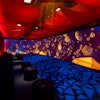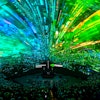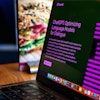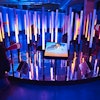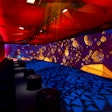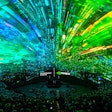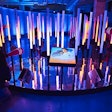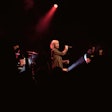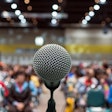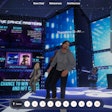
Emory Parkins is a PR and communications associate at leftchannel, an Ohio-based design consultancy firm with a focus on motion graphics and animation.
 Emory ParkinsPhoto: Courtesy of leftchannel
Emory ParkinsPhoto: Courtesy of leftchannel
One of the earliest and most influential title designers was Saul Bass, who is known for his iconic title sequences for films such as Psycho, North by Northwest, and West Side Story. Bass's work helped to establish title design as a critical element of film and television, and he has inspired countless other designers in the field.
Saul Bass infamously said, “My initial thoughts about what a title can do was to set mood and the prime underlying core of the film’s story, to express the story in some metaphorical way. I saw the title as a way of conditioning the audience, so that when the film actually began, viewers would already have an emotional resonance with it.”
In much the same way, both in-person or virtual events can benefit from thoughtful title design—by setting up the underlying story, conditioning the audience, and even creating an emotional resonance with the upcoming content.
Leveraging our experience in TV and film, leftchannel approaches opening title design for events from a theatrical state of mind. In this article, we break down the emotional and functional components of effective event opening titles, and share how the right design strategy can take the final piece to extraordinary levels. Motion graphics and animation studio leftchannel created this opening graphic for health-tech brand HIMSS’s annual conference. It was created with the event's theme—"Be the Change"—in mind.Photo: Courtesy of leftchannel
Motion graphics and animation studio leftchannel created this opening graphic for health-tech brand HIMSS’s annual conference. It was created with the event's theme—"Be the Change"—in mind.Photo: Courtesy of leftchannel
Center the Energy
Title design is a transitional mechanism. Unlike in film or TV, when a viewer has prepared emotionally for what they are about to watch (horror, comedy, action, etc), event attendees are joining from a mix of emotional states. The conference opener is an opportunity to bring a number of people together into a focused state of awareness and shared emotion. It’s where the tone is established and excitement is built. More importantly, it’s where you remind attendees why they chose to spend their valuable time at your event.
With the opening title leftchannel designed for health-tech brand HIMSS’s annual conference, we centered the energy of 40,000-plus attendees to build excitement and establish a collective emotional state centered on the conference theme, "Be the Change."
Introduce and Create Space for the Brand
Conference aesthetics are often wrapped within a sub-brand, typically an extension of the host’s core brand. This is an important consideration in title design, as there should be a recognizable connection to the main brand while allowing room for the conference to take on a defined identity.
When thinking through the design, this might mean narrowing the color palette or expanding on the core brand’s design elements. Up to this point, attendees have seen that building on marketing and advertising content is a useful approach as it reinforces the visual communication while presenting it in a more dimensional way. For ThoughtSpot’s Beyond 2019 Conference, leftchannel imagined a piece of the ThoughtSpot identity as their AI search product, locating and extracting insights from a kaleidoscopic world of data and then organizing it into meaningful form.Photo: Courtesy of leftchannel
For ThoughtSpot’s Beyond 2019 Conference, leftchannel imagined a piece of the ThoughtSpot identity as their AI search product, locating and extracting insights from a kaleidoscopic world of data and then organizing it into meaningful form.Photo: Courtesy of leftchannel
Activate the Conference Theme
As with film titles, a conference title is strongest when it doesn’t steal anything from the story but rather contributes additional connotation. Through use of metaphor and symbolism, the title can create a visual and emotional foundation for the content to stand upon. For ThoughtSpot’s Beyond 2019 Conference, for example, leftchannel imagined a piece of the ThoughtSpot identity as their AI search product, locating and extracting insights from a kaleidoscopic world of data and then organizing it into meaningful form. This use of symbolism allowed us to bring to life the expansive concept of data visualization.
A More Complete Event Experience
As is essential with other experiences, the chance to set the tone from the first impression is invaluable for events. But, as we've covered here, the right opening title is about more than just how to begin. It creates a thread that runs throughout and ultimately weaves the entire experience together.
